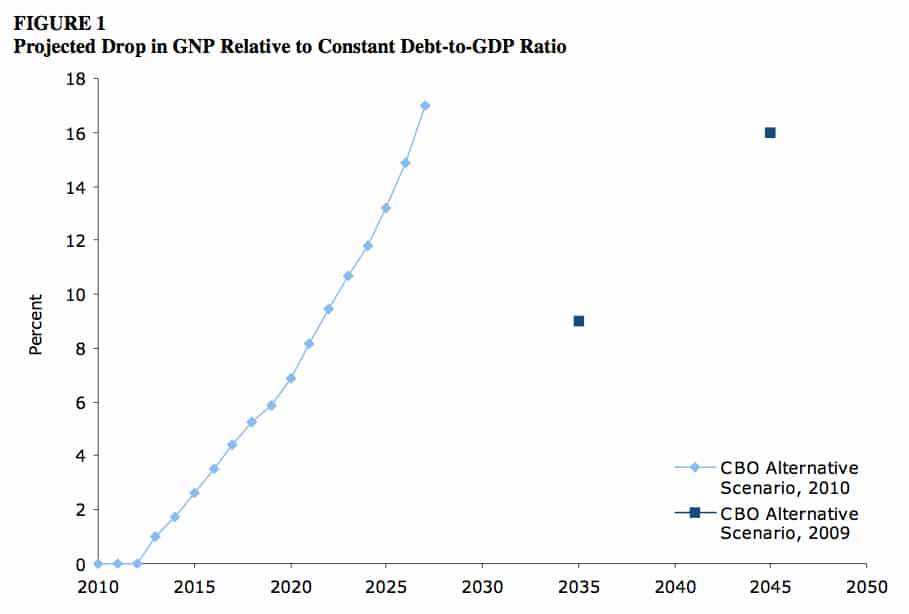

This is part of the Morning Briefing, a summary of health policy coverage from major news organizations. Health Industry Could Be Playing Defense On MedicareĪfter years of trying to squash the expansion of government-funded health care and preserve business from private payers, the health care industry is suddenly facing new threats to the revenue it receives from the Medicare. If combined, the program’s trust funds would be exhausted in fiscal year 2033.
#Congressional budget office social security report crack#
Public comment closed this week on on a proposal to crack down on Medicare Advantage marketing practices, impose other standards on Medicare drug plans and create requirements to increase access to behavioral health and culturally competent care. JIn CBO’s projections, spending for Social Security increases relative to GDP over the next 75 years, and the gap between outlays and revenues widens. Medicare Advantage and Medicare drug plans told the Centers for Medicaid and Medicare Services that too much regulation at once could drive up costs and result in increased premiums or fewer benefits. Insurers Balk At Proposed Changes To MA Marketing Rules budget, and as the population ages, it's expected to only get more expensive.

Outlays, by Category Percentage of Gross Domestic Product Social Security Other Mandatory Discretionary Total Net Interest Major Health Care Programs 2012 2022 2032 2042 2052 2012 2022 2032 2042 2052 2012 2022 2032 2042 2052 0 10 20 30 40 0 10 20 30 40 Projected See. Medicare is one of the largest line items in the U.S. for Medicare and Social Securityresulting in ever-larger budget deficits.

There's an inconvenient truth underneath the politics of Medicare - its finances are simply unsustainable. Medicare Politics Are On A Crash Course With Reality “The Social Security solvency date - the exhaustion date for the trust fund - is now within the budget window,” CBO Director Phillip Swagel said, referring to the 10-year period covered by the agency’s annual report. Social Security funds are set to start running a shortfall in 2032, one year earlier than previously expected, the director of the Congressional Budget Office (CBO) said on Tuesday. Social Security Set To Run Short Of Funds One Year Earlier Than Expected Funds for Social Security would hit a shortfall in 2032 - a year earlier than expected.ĬBO Warns Of Sharp Uptick In Social Security, Medicare Spendingįederal spending on Social Security and Medicare is projected to rise dramatically over the next decade, far outpacing revenues and the economy on the whole while putting new pressure on Congress to address accelerated threats of insolvency, according to new estimates from the Congressional Budget Office (CBO). The increase is driven by a variety of factors, including Social Security’s new cost-of-living adjustment, the rising cost of medical services under Medicare and greater participation rates in both programs, as the last of the baby boomers become eligible for retirement benefits. (Lillis, 2/15) The Congressional Budget Office has new estimates about federal spending on Social Security and Medicare over the next decade, warning it may rise faster than revenues and the whole economy. Social Security is not in crisis.Ī paper released yesterday by EPI looks at Social Security’s long-term finances, concluding that the biggest cause of Social Security’s projected long-term shortfall is not rising life expectancy or the baby boomer retirement, but rather stagnant wages and growing inequality.Federal Spending On Medicare, Social Security Will Outstrip Revenues: CBO The article also fails to mention that even if nothing is done to shore up the system’s finances, current tax receipts will be sufficient to cover most benefits in 2037, which will still be higher in inflation-adjusted terms than benefits are today. The AP story claims that “Social Security will run at a deficit this year and keep on running in the red until its trust funds are drained by about 2037.” The story misrepresents the trust fund’s solvency by excluding interest earnings, a major source of revenue for Social Security. Nevertheless, gloomy news reports-in particular an Associated Press story by Stephen Ohlemacher-show that when it comes to Social Security, no news is bad news. In CBO’s projections, spending on Social Security exceeds revenues to the program in 2022 and increases relative to GDP over the next 75 years, while revenues remain stable. Social Security is still projected to run an $868 billion surplus over the next decade, building up a trust fund sufficient to last through the peak baby boomer retirement years. This will have little impact on Social Security’s long-term finances, however, in part because workers who take early retirement receive reduced benefits. Outlays are also higher than anticipated before the downturn, as Social Security has helped cushion the blow for older workers who have lost their jobs. Yesterday’s Congressional Budget Office budget report showed that the weak economy continues to be a drag on Social Security’s short-term finances as payroll tax receipts lag pre-recession projections.


 0 kommentar(er)
0 kommentar(er)
